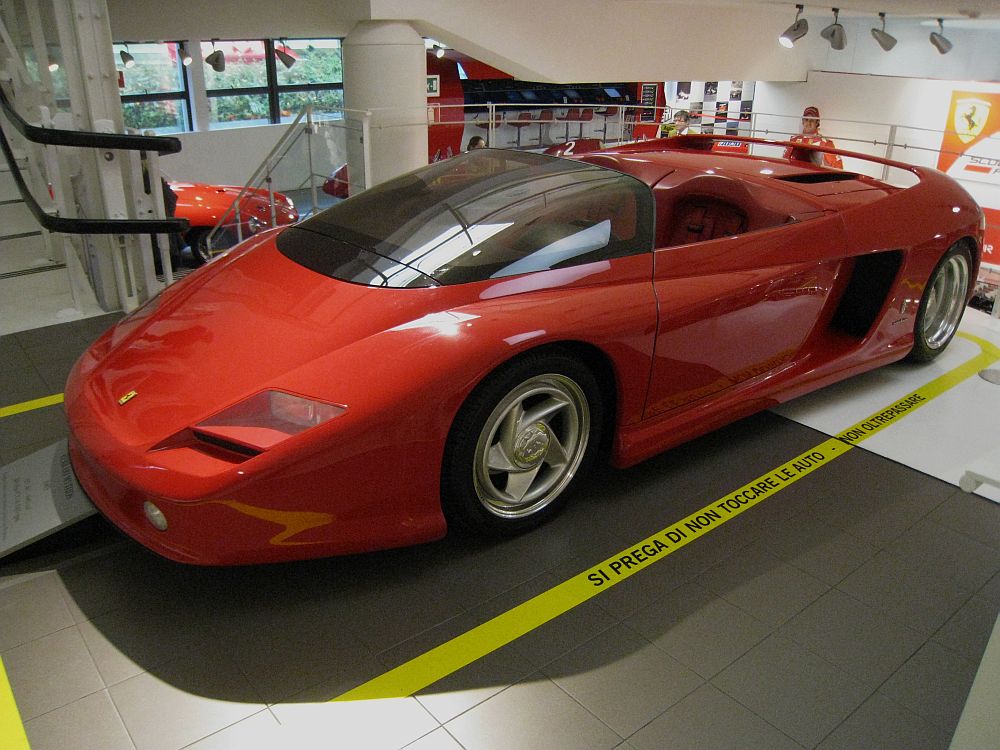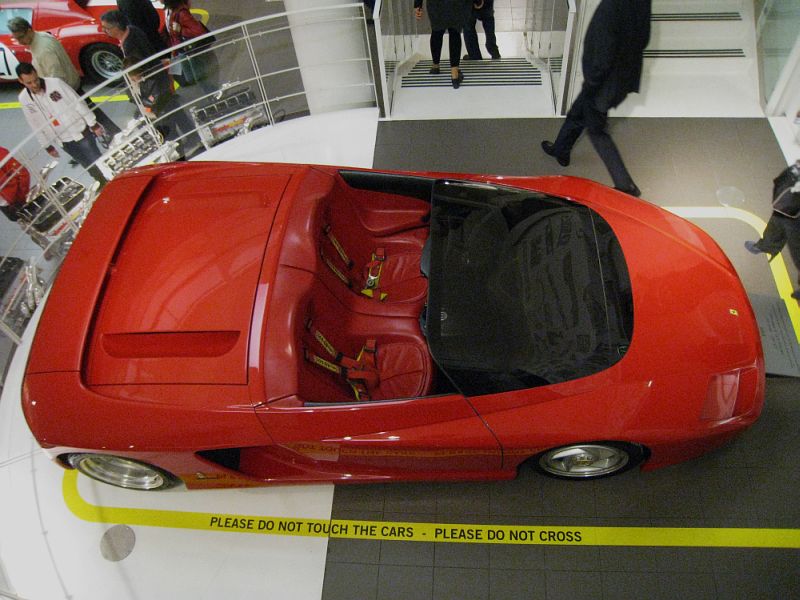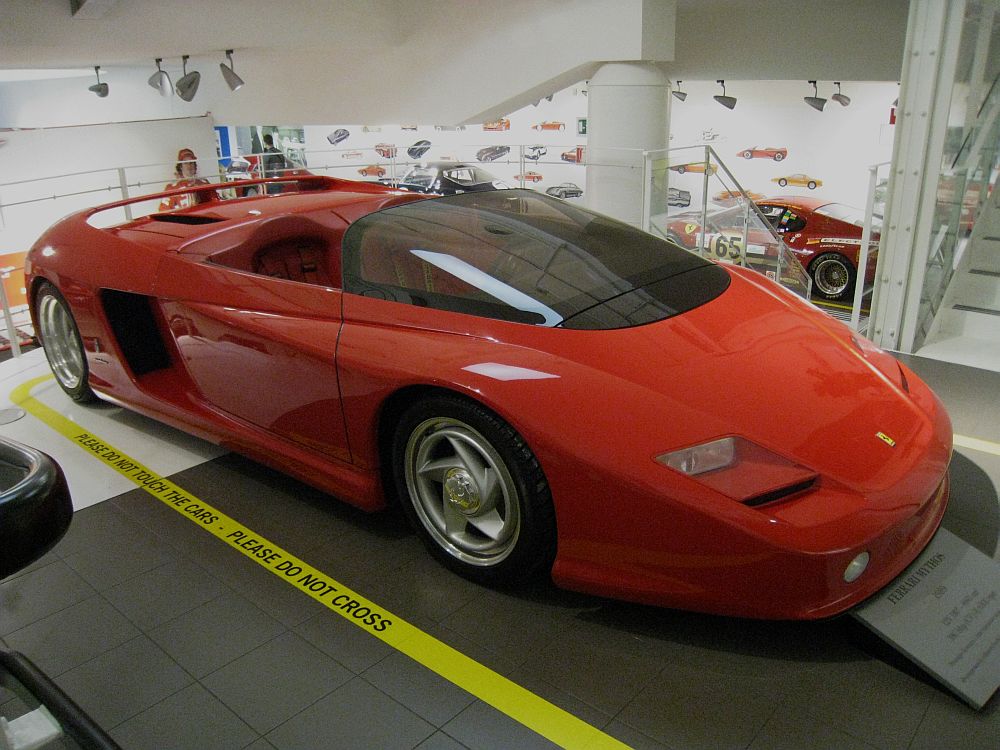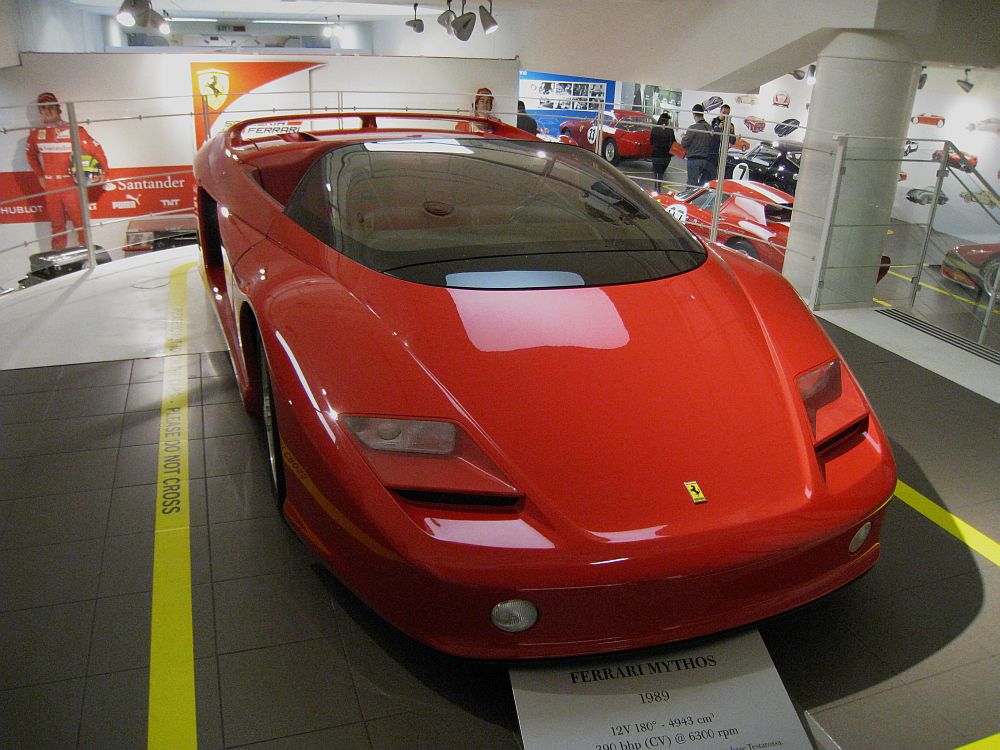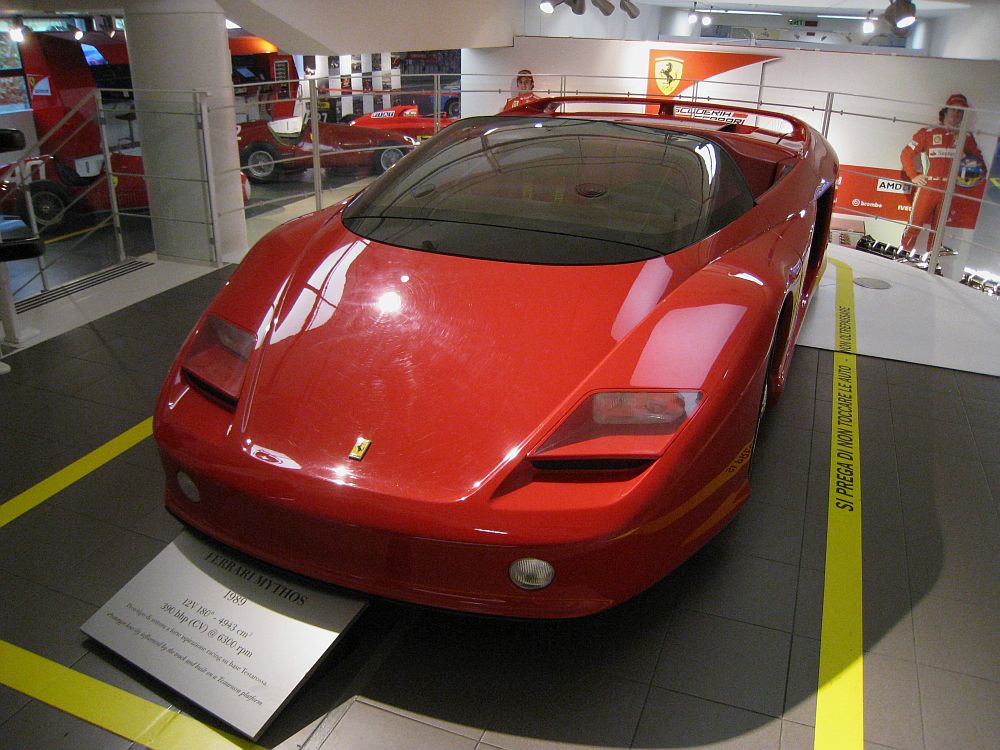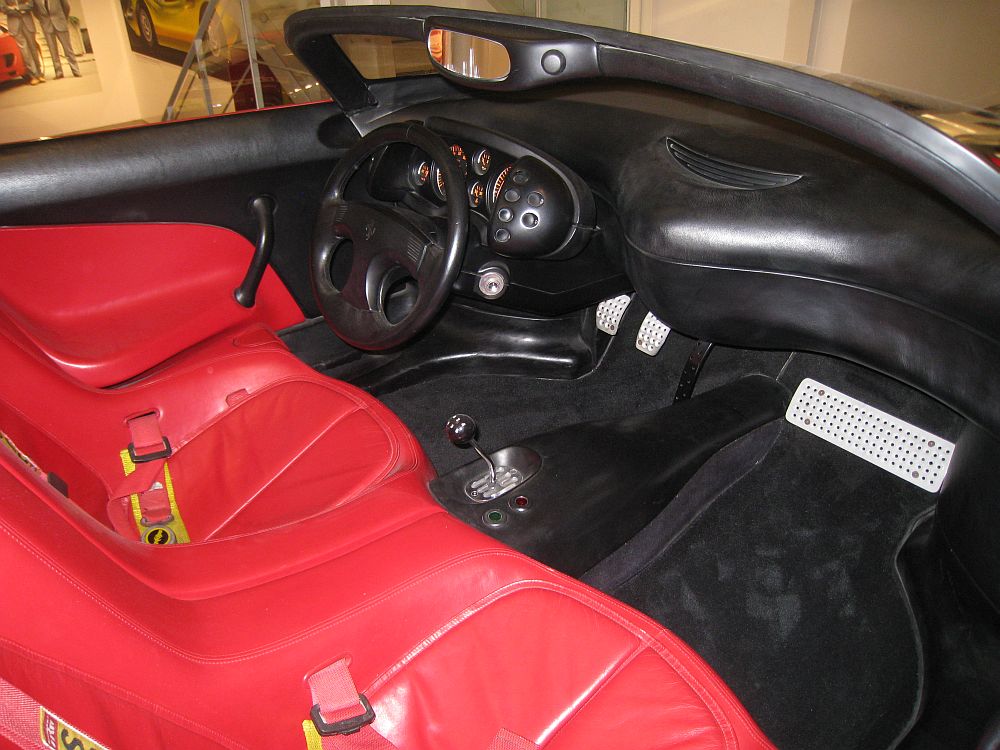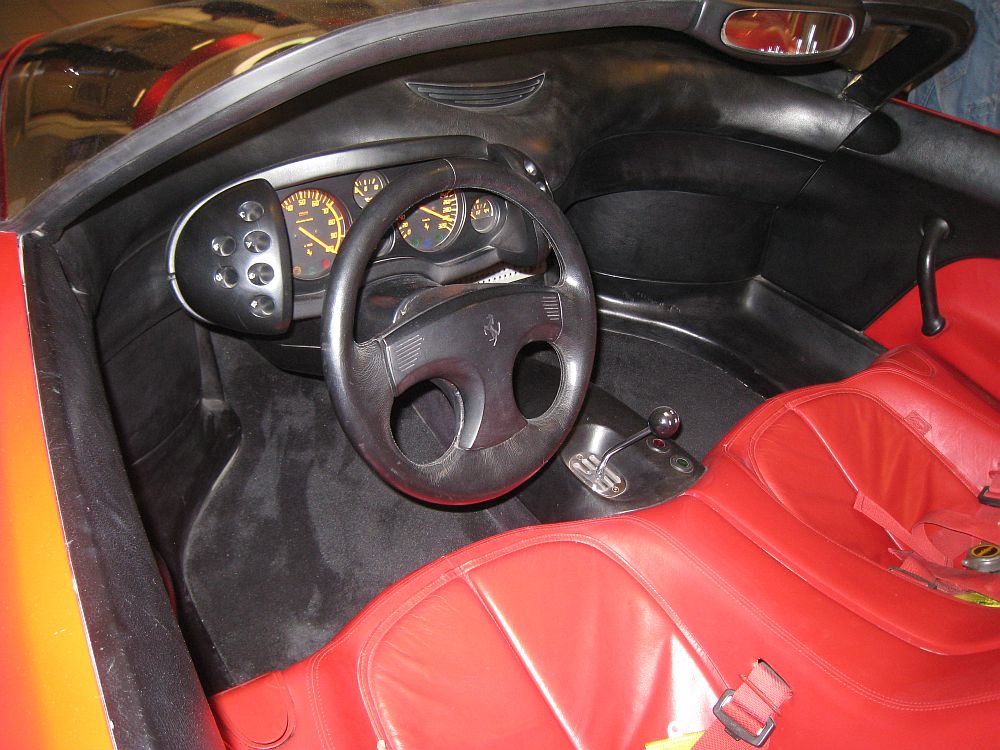Description
The Ferrari Mythos was a dramatic concept car unveiled by Pininfarina at the 1989 Tokyo Motor Show. Based on the chassis and mechanicals of the Ferrari Testarossa, the Mythos was created as a design study to showcase what Ferrari’s next generation of exotic sports cars might look like at the dawn of the 1990s. With its futuristic wedge-shaped styling and open-barchetta layout, it was one of Pininfarina’s most striking interpretations of Ferrari’s design language.
At its core, the Mythos was powered by the familiar 4.9-liter flat-12 engine from the Testarossa, producing around 390 horsepower. Mounted in a rear mid-engine configuration, it delivered performance in line with Ferrari’s flagship road cars of the era, with a top speed exceeding 290 km/h and acceleration comparable to the Testarossa. However, the Mythos was never intended for production or racing—it was purely a design statement, meant to highlight Ferrari’s potential future directions.
The styling was bold and aggressive, penned by Pininfarina’s design team under Enrico Fumia. The Mythos adopted a low, wedge-like profile, with sharp lines and wide proportions that emphasized its power and stance. The open cockpit and sweeping bodywork gave it the character of a modern barchetta, while details such as the massive side air intakes and exposed rear engine cover reinforced its mechanical drama. Despite its futuristic form, the design was still rooted in Ferrari tradition, echoing themes from the Testarossa but pushing them further into conceptual territory.
The Mythos made such an impression that it attracted the attention of Brunei’s royal family, who commissioned two road-going versions for their private collection, making it one of the few Ferrari concept cars ever to be produced beyond a single prototype. These cars remained one-offs and were never made available to the public.
Today, the Ferrari Mythos is remembered as one of Pininfarina’s most daring and iconic concepts. While it never directly influenced a production Ferrari, many of its styling cues foreshadowed design trends of the 1990s, including the emphasis on sculpted aerodynamics and dramatic wedge-shaped forms. Its combination of raw Ferrari engineering and futuristic design has made it a favorite among enthusiasts, representing the spirit of experimentation that defined Ferrari’s collaboration with Pininfarina in the late 20th century.
